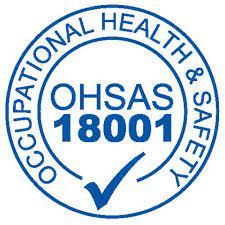Railroad Filter Care: Keeping the Rails Running Smoothly
Maintaining and caring for railroad filters is essential to ensure their proper functioning and to avoid disruptions in railroad operations. Here are some precautions and best practices to consider:
- Regular Inspection:
Establish a routine inspection schedule for all filters in the railroad system.
Visually inspect filters for signs of damage, clogs, or wear.
Look for leaks or unusual noises around filter housings. - Replace Filters as Recommended:
Follow the manufacturer’s recommendations for filter replacement intervals.
Do not exceed the recommended service life of filters, as this can lead to reduced efficiency and potential damage to equipment. - Cost-Efficiency:
While cost is a consideration, it should not be the sole determining factor. Focus on the overall value and quality of the filters rather than selecting the cheapest option, as subpar filters can lead to increased operating costs and safety concerns. - Use Quality Filters:
Ensure that you use high-quality filters that meet industry standards and are compatible with your specific railroad equipment.
Consider using OEM (Original Equipment Manufacturer) filters, as they are designed to meet the exact specifications of your equipment by maintaining proper Standard technical requirements to manufacture filters. - Proper Installation:
Ensure filters are correctly installed with the flow direction and sealing gaskets are positioned correctly.
Tighten filter housings to the manufacturer’s specifications to prevent leaks. - Monitor Filter Efficiency:
Implement a monitoring system to measure the efficiency of filters over time.
Use pressure gauges or differential pressure indicators to assess filter clogging and determine when replacements are needed. - Maintain Cleanliness:
Keep the area around filters clean to prevent the introduction of contaminants during maintenance.
Ensure that filter storage areas are clean and free from dust and debris. - Train Personnel:
Train maintenance personnel on proper filter handling and replacement procedures.
Ensure that they are aware of safety precautions when working with filters, especially in confined spaces or near moving equipment. - Store Filters Properly:
Store spare filters in a clean and dry environment to prevent contamination before installation.
Label filters with their installation date and service life information. - Emergency Procedures:
Develop and communicate emergency procedures for filter failures or malfunctions that could impact safety or operations.
Have spare filters readily available for quick replacements in case of emergencies. - Document Maintenance:
Maintain detailed records of filter inspections, replacements, and maintenance activities.
This documentation helps track the performance of filters and ensures compliance with maintenance schedules. - Environmental Considerations:
Dispose of used filters in an environmentally responsible manner, adhering to local regulations.
If filters contain hazardous materials, handle and dispose of them following safety protocols.
By following these precautions and best practices, railroad operators can ensure the reliability and efficiency of their filter systems, minimize downtime, and maintain a safe and healthy environment for passengers and crew members. Regular maintenance and attention to filter quality are key to achieving these goals.









